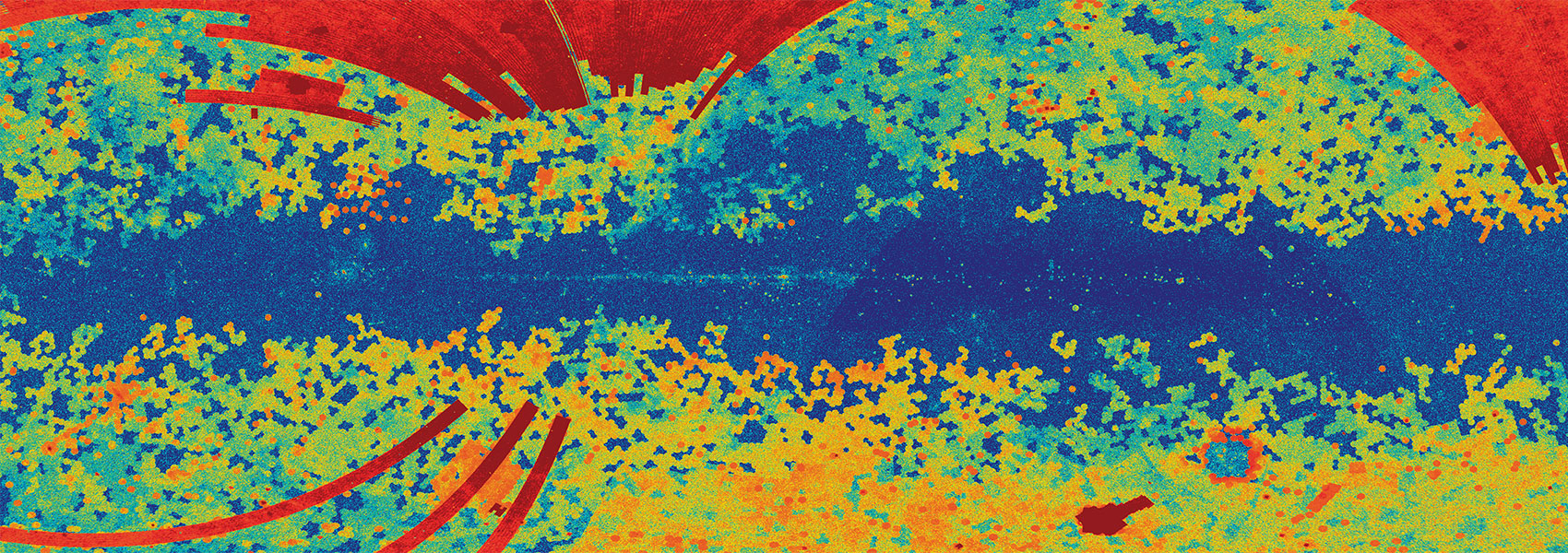December
2018
•
2018A&A...620A.152F
Authors
•
Franco, M.
•
Elbaz, D.
•
Béthermin, M.
•
Magnelli, B.
•
Schreiber, C.
•
Ciesla, L.
•
Dickinson, M.
•
Nagar, N.
•
Silverman, J.
•
Daddi, E.
•
Alexander, D. M.
•
Wang, T.
•
Pannella, M.
•
Le Floc'h, E.
•
Pope, A.
•
Giavalisco, M.
•
Maury, A. J.
•
Bournaud, F.
•
Chary, R.
•
Demarco, R.
•
Ferguson, H.
•
Finkelstein, S. L.
•
Inami, H.
•
Iono, D.
•
Juneau, S.
•
Lagache, G.
•
Leiton, R.
•
Lin, L.
•
Magdis, G.
•
Messias, H.
•
Motohara, K.
•
Mullaney, J.
•
Okumura, K.
•
Papovich, C.
•
Pforr, J.
•
Rujopakarn, W.
•
Sargent, M.
•
Shu, X.
•
Zhou, L.
Abstract
•
Aims: We present a 69 arcmin2 ALMA survey at 1.1 mm, GOODS-ALMA, matching the deepest HST-WFC3 H-band part of the GOODS-South field.
Methods: We tapered the 0″24 original image with a homogeneous and circular synthesized beam of 0″60 to reduce the number of independent beams - thus reducing the number of purely statistical spurious detections - and optimize the sensitivity to point sources. We extracted a catalog of galaxies purely selected by ALMA and identified sources with and without HST counterparts down to a 5σ limiting depth of H = 28.2 AB (HST/WFC3 F160W).
Results: ALMA detects 20 sources brighter than 0.7 mJy at 1.1 mm in the 0″60 tapered mosaic (rms sensitivity σ ≃ 0.18 mJy beam-1) with a purity greater than 80%. Among these detections, we identify three sources with no HST nor Spitzer-IRAC counterpart, consistent with the expected number of spurious galaxies from the analysis of the inverted image; their definitive status will require additional investigation. We detect additional three sources with HST counterparts either at high significance in the higher resolution map, or with different detection-algorithm parameters ensuring a purity greater than 80%. Hence we identify in total 20 robust detections.
Conclusions: Our wide contiguous survey allows us to push further in redshift the blind detection of massive galaxies with ALMA with a median redshift of z = 2.92 and a median stellar mass of M⋆ = 1.1 × 1011 M⊙. Our sample includes 20% HST-dark galaxies (4 out of 20), all detected in the mid-infrared with Spitzer-IRAC. The near-infrared based photometric redshifts of two of them (z ∼ 4.3 and 4.8) suggest that these sources have redshifts z > 4. At least 40% of the ALMA sources host an X-ray AGN, compared to ∼14% for other galaxies of similar mass and redshift. The wide area of our ALMA survey provides lower values at the bright end of number counts than single-dish telescopes affected by confusion.
Links



